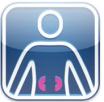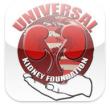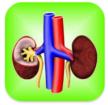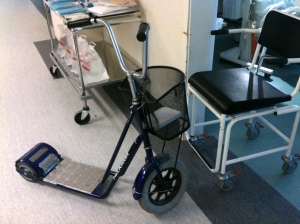Last week Shirley (not her real name) wrote to me. She was worried about how her relationship with her boyfriend would change (or survive) now that he has kidney failure. I think Shirley’s email, and maybe my answers, will be relevant to many other members of the BigD club, not the least because they will realise that they are not alone.
Hi Greg,
My name is Shirley and I came across your blog through the Kidney Australia website. I’m sure you get plenty of e-mails, thank you for taking your time to read this!!
My boyfriend has kidney disease with a function of 50%. He is 32, eats healthy and is generally fit. Over the past few months he has become increasingly tired which is affecting what we do on a weekly basis. I’m 25 and have many things I want to do in life but am unsure if we’ll get to do these things.
I guess what I am asking is how did your experiences with kidney disease affect your relationship and the things you did/do with loved ones?
I am really struggling with everything that is going on as I want to marry my boyfriend but he feels that he is limiting my life experiences as we don’t go out much anymore, leave places early etc. I feel selfish if I want to go for a night out etc. so I usually make sure we’re doing movies and dinner or something where he can go home early to sleep.
I know it sounds silly about ‘a night out’ but I feel like this is the time I should be doing all this before life gets ‘serious’ and with my partners kidney disease all these decisions become ‘serious’ and it scares me!! I could just be young and naïve and might look back in 5 yrs and think bloody hell I was upset about going out? Lol but please understand that I’ve had a lot of growing up to do and have made a lot of changes to suit my boyfriend’s needs. It’s never bothered me but has come up in the past month and is impacting us dearly.
We want to turn around kidney disease ruling our relationship and determining our future. I had a few questions, whenever you have time please respond. Any advice or experiences would be much appreciated ![]()
- What things did you do to ensure kidney disease did not stop you from your day to day things?
- How did your day to day life change as you got older? Is there a big impact?
- If you have a partner how did they cope with the kidney disease? What changes did you both have to make?
- When did you have to get dialysis and how did this impact your day today life?
I’m sorry for all the questions and I’m sure I could just look it up on the net but I was desperate to contact someone who has experience and understanding with kidney disease. I am scared for my boyfriend, I love him very much and am scared how this will impact us emotionally, socially and financially. I know people would say if you loved him you would just stick by him and work through it but it’s not that easy and I feel immense pressure because I love him so dearly but don’t know how and if the kidney problems will impact our future a lot.
I really appreciate your time in reading this e-mail. Your blog is amazing and you are truly an inspiration.
Kind regards,
Shirley
Hi Shirley, thanks for your email. You are not alone. Many people feel as you do when kidney disease attacks their partner: How will this affect our lives? How will it affect my life?
Unfortunately, the answer to both those questions is quite a bit. Kidney disease is a game changer, sending your lives off into a new direction. Not necessarily a bad direction, just a new, usually unexpected one.
So, what can you expect?
It sounds like your boyfriend’s kidney function is slowly dropping. Eventually, it will fall below the level where he cannot live without kidney replacement therapy (usually dialysis). During this early stage, your social options will be restricted. He will become progressively weaker and more easily tired, have headaches and nausea; you’ll leave social events early, maybe a miss a few. He won’t be able to travel far from home/hospital. His doctor will prescribe progressively more food/protein restrictions and he will feel pretty miserable. He may be forced to move from full-time to part-time work, or work may become too difficult.
Eventually, he will go onto dialysis, typically three times a week for about four hours per time. The rest of the time is yours. A surprise for most people is that after a few weeks they begin to feel much healthier and have more energy. In fact, for much of the time outside dialysis sessions, life can come pretty close to what it was before kidney failure, especially when you are young. If you have a flexible employer part- or full-time work becomes possible. Travel takes a bit more organising, but is definitely an option.
If your boyfriend has a transplant, in most instances, he will stop dialysis and live a normal life. He will take anti-rejection drugs for the life of the new kidney, but with a healthy transplant, your life together can be all you want it to be, including travel, socialising, some sports, and full-time work. A word about transplants: think of them as another treatment for kidney disease, they are not a cure, and like all large operations, some fail and can give you a very difficult ride.
A key element while on dialysis and with a transplant is to keep fit. Getting back to the gym as quickly as possible once things settle down helps you get back to your day-to-day life.
So, depending on the stage of kidney failure/treatment you boyfriend is at, you will have different challenges, some physical, more emotional. It can be a heavy load but the big things in life, marriage, children, travel and adventure are still on the cards. Life can still be a joy.
Lastly, I know several young couples living with kidney failure and dialysis. In the main, it has strengthened their relationship and they are living happy, fulfilling lives. However one married couple has parted. The husband was on dialysis and though these things are never clean cut, part of the reason they separated was that his wife found it too difficult. He has since found another partner.
I hope this is of some help in answering your questions.
Good luck and keep in touch!
Regards,
Greg

 Professional dialysis recruitment
Professional dialysis recruitment












